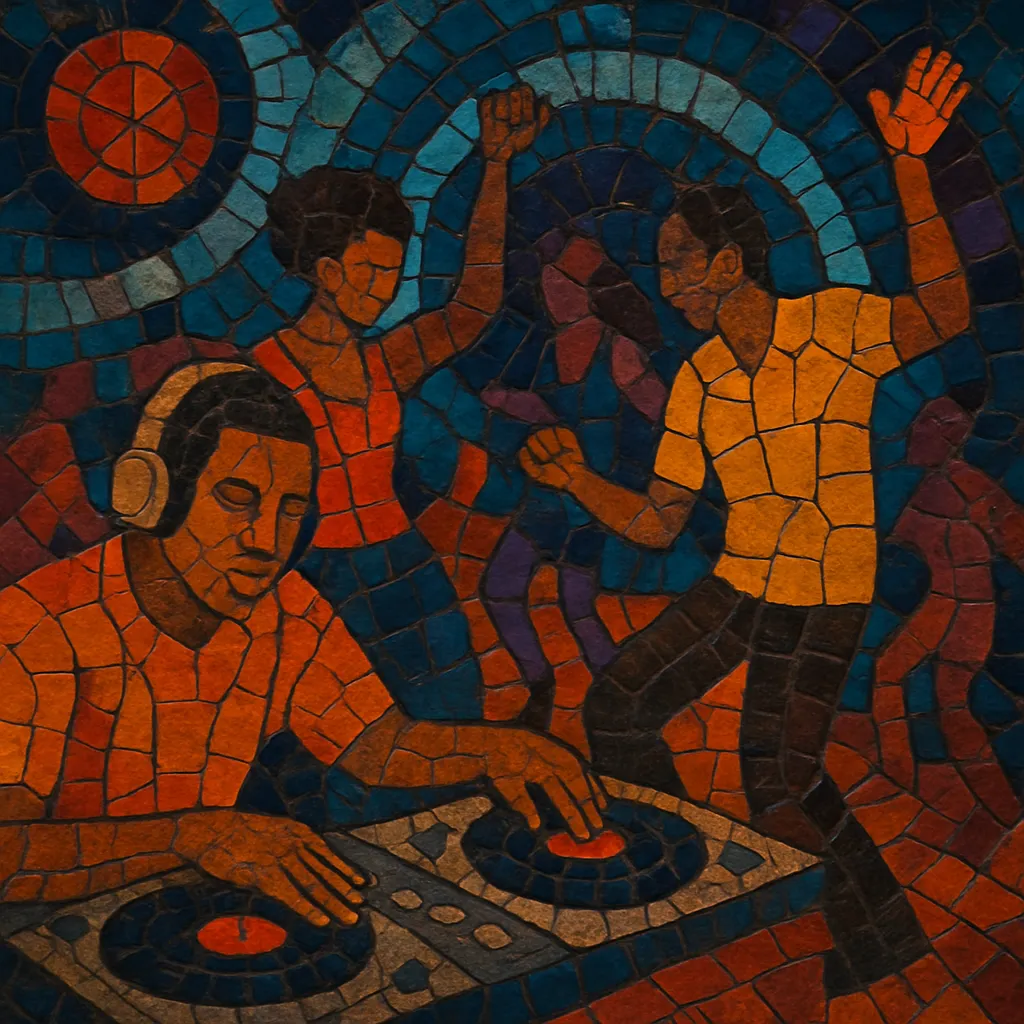UK funky is a London-born club style that fuses house music’s four-on-the-floor pulse with syncopated, Afro‑Caribbean percussion and a distinctly British bass sensibility.
Usually sitting around 125–130 BPM, it favors swung, polyrhythmic drum patterns, rolling subs, and concise chord stabs over maximal, ravey textures. Vocals range from soulful, R&B‑leaning hooks to MC chants and call‑and‑response crowd shouts, keeping the dancefloor feel front and center.
The result is a percussive, party‑focused sound that bridges house, UK garage, and African/Caribbean rhythmic DNA, while retaining DJ‑friendly structures and space for singers and MCs.
UK funky crystallized in London in the late 2000s as DJs and producers blended house’s 4/4 foundations with the rhythmic push of UK garage, the loose swing of broken beat, and Afro‑diasporic percussion drawn from soca, tribal house, and Afro house. Rinse FM shows and London club nights incubated the sound, with early champions refining a template of sub‑driven, syncopated drums and roomy, vocal‑ready arrangements.
By 2008–2009, the scene produced crossover anthems and unmistakable dance crazes. Sleek chord stabs, busy congas, and bouncing subs defined the club sound, while singers and MCs brought catchy hooks that traveled beyond specialist dancefloors. The genre became a staple across UK clubs, pirate radio, and mainstream charts adjacent spaces.
Around the early 2010s, the original wave cooled as artists diversified into adjacent directions—UK bass, post‑dubstep, and deeper tech‑leaning house—yet the UK funky rhythmic blueprint endured. Its percussive 125–130 BPM pocket and vocal‑friendly arrangements helped pave the way for later UK Afro‑diasporic club fusions and informed the broader UK bass ecosystem. Periodic revivals, reissues, and new generations of producers have kept its DNA active in contemporary club sets.


